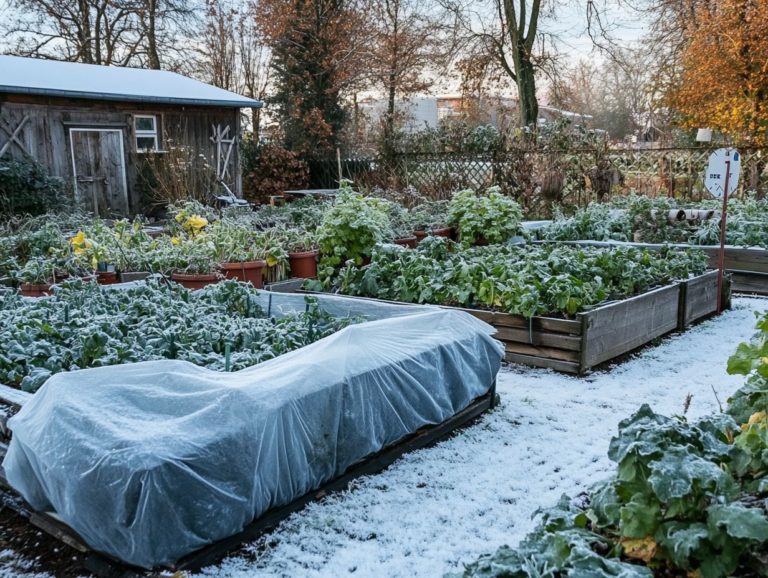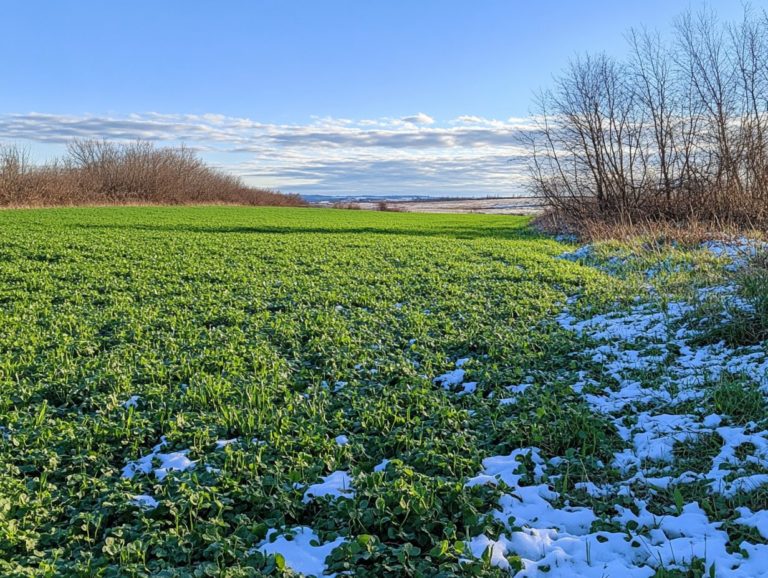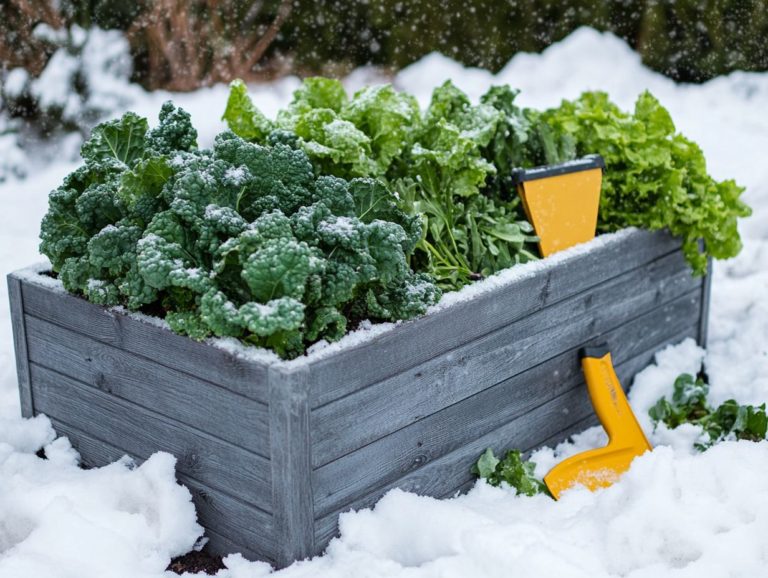How to Identify Cold-Weather Diseases in Plants?
As temperatures plummet, your plants may face heightened susceptibility to various cold-weather diseases, including key diseases like Botrytis cinerea and Downy Mildew.
Recognizing the signs and symptoms of these ailments is essential for preserving their health during the chilly months. This article delves into the common indications of cold-weather diseases, the environmental factors that facilitate their spread, and effective preventive strategies, including cultural care, to shield your plants.
It also covers treatment options, including disease management practices and how to address underlying issues. Arm yourself with the knowledge needed to safeguard your green companions this winter, ensuring their health and resilience against winter conditions.
Contents
- Key Takeaways:
- Common Signs and Symptoms
- Causes of Cold-Weather Diseases
- Preventive Measures for Cold-Weather Diseases
- Treating Cold-Weather Diseases
- Identifying and Addressing Underlying Issues
- Frequently Asked Questions
- What are some common cold-weather diseases in plants?
- How do I know if my plants have frost damage?
- What is winter burn and how can I identify it?
- Can cold weather cause powdery mildew in plants?
- What steps can I take to prevent cold-weather diseases in my plants?
- What should I do if I suspect my plants have a cold-weather disease?
Key Takeaways:
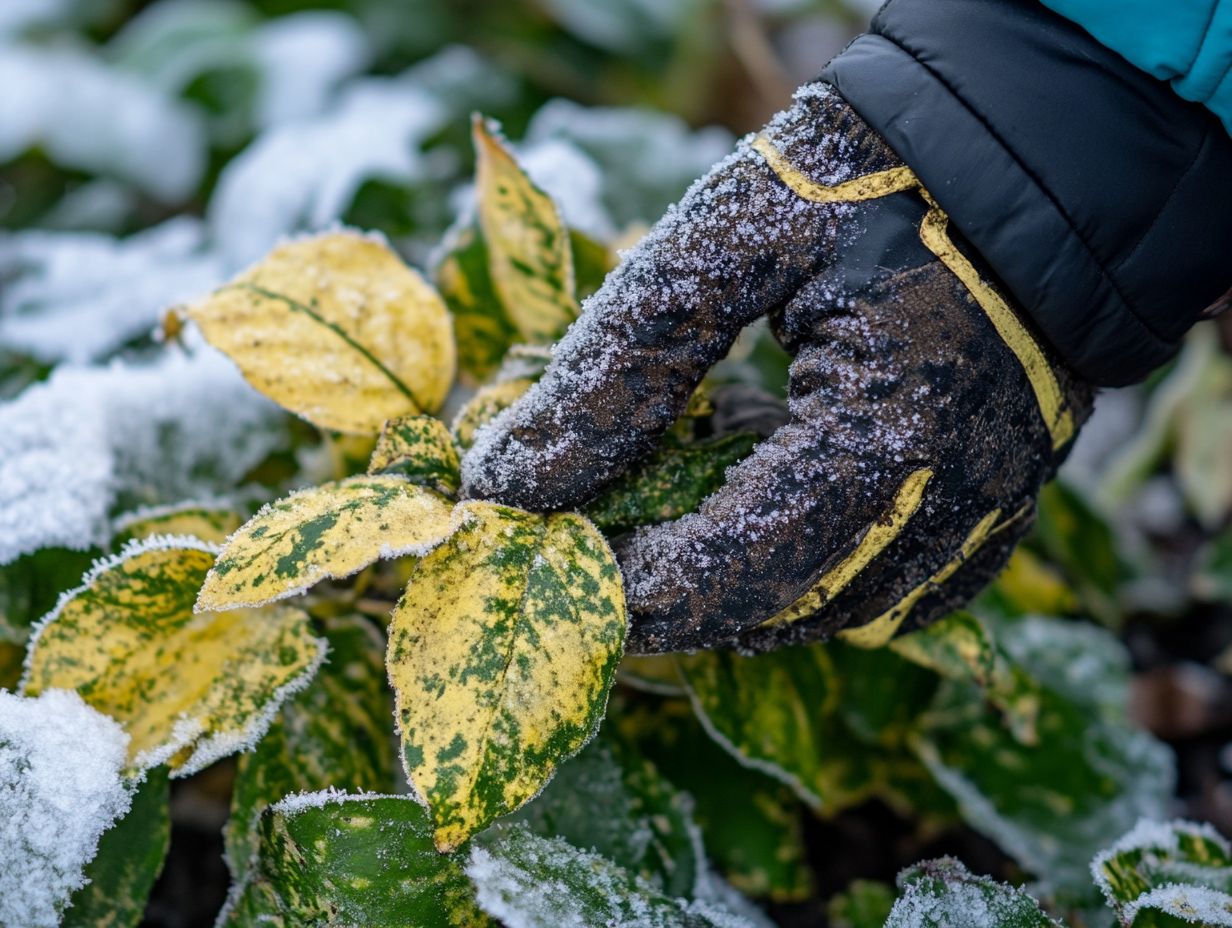
- Observe visual indicators such as discoloration or wilting in plants to identify cold-weather diseases.
- Environmental factors and plant vulnerability play a key role in the development of cold-weather diseases.
- Taking preventive measures can help protect plants and effectively treat cold-weather diseases.
What are Cold-Weather Diseases?
Cold-weather diseases are plant ailments that mainly target perennial plants, such as Heuchera and Coreopsis, during the chillier months. To protect your plants, it’s important to learn how to identify cold-weather pest problems, as these diseases significantly affect their health and visual appeal.
Diseases like Botrytis cinerea, Downy Mildew, and Aster yellows, along with host-specific diseases like Cucumber mosaic virus, thrive in conditions typical of USDA Zone 6. Lower temperatures and moisture create a perfect breeding ground for pathogens.
Act now to implement effective disease management strategies to minimize their impact and ensure the ongoing vitality of your cherished plants.
During these frigid months, your plants may become particularly susceptible, showing symptoms such as discolored leaves, stunted growth, or unusual spots, which indicate underlying leaf diseases. Identifying these diseases early is critical, so be sure to check out how to identify and treat cold weather diseases to act quickly! Timely interventions can save your beloved perennials from decline and enhance overall plant health.
Environmental factors like humidity, soil moisture, and soil drainage play crucial roles in either worsening or alleviating these issues. You must stay vigilant, observing any changes in your plants appearance and adjusting your care routines accordingly, especially regarding pest control strategies. You may need to improve air circulation, implement disease prevention strategies, or use fungicides like chlorothalonil when necessary.
Common Signs and Symptoms
Recognizing the common signs and symptoms of cold-weather diseases, such as aesthetic diseases, is essential for effective management and early intervention. Additionally, knowing how to identify cold-weather weeds can ultimately safeguard plant health.
You may notice that diseased plants exhibit wilting, discoloration of leaves, or stunted growth, all of which point to underlying leaf or root diseases.
Aesthetic diseases can manifest through unsightly growth patterns, leaf diseases, or loss of foliage, all of which can significantly diminish the visual appeal of your perennial landscapes.
Visual Indicators of Disease
Visual indicators of cold-weather diseases are crucial for identifying issues before they spiral out of control. Look for signs such as leaf discoloration, wilting, or even premature leaf drop. To better understand these symptoms, check out what the signs of plant stress in cold weather might be, as each sign could indicate a health issue that needs your immediate attention.
These symptoms help distinguish between different plant pathology issues, guiding you in selecting the most effective pest control strategies.
Recognizing these visual cues can greatly enhance your ability to maintain plant health. For instance, yellowing leaves might indicate nutrient deficiencies or root rot, while brown spots can hint at fungal infections.
Don t overlook the undersides of leaves; pests like aphids or spider mites often lurk there, leaving behind subtle yet significant signs of distress. By identifying these indicators promptly, you can take swift action, such as adjusting your watering practices or applying the right fungicides.
Staying vigilant and informed about various visual symptoms can dramatically boost your plants’ resilience against cold-weather ailments.
Take charge of your garden’s health this winter start observing your plants today!
Causes of Cold-Weather Diseases
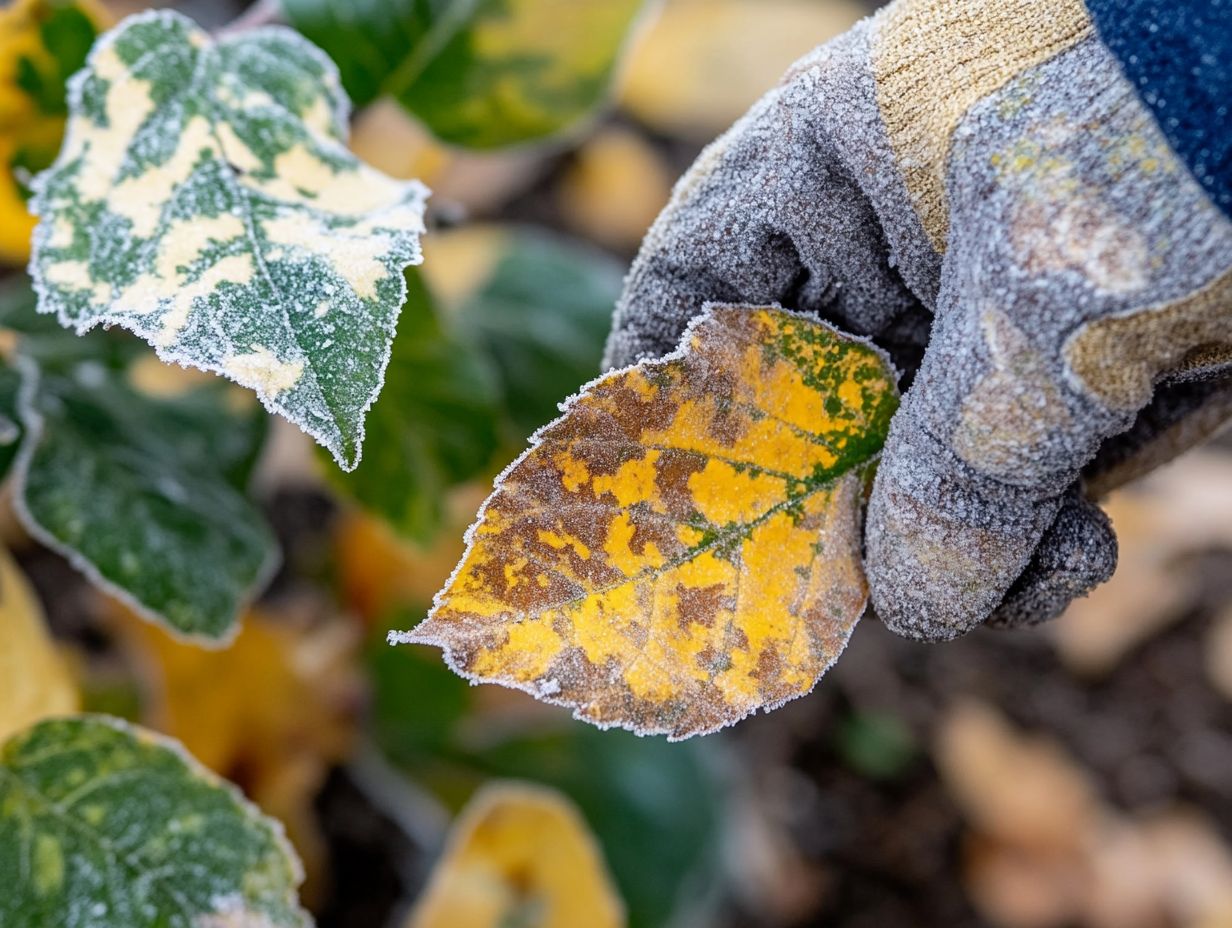
The causes of cold-weather diseases are often complex, shaped by a range of environmental factors that determine plant susceptibility. Fluctuating soil moisture levels, combined with insufficient winter protection, create ideal conditions for pathogens to flourish in perennial plants. To effectively manage these issues, it’s important to know how to identify pests in cold-weather crops.
Grasping these underlying causes is crucial for developing effective disease prevention strategies and enhancing the overall health of your plants.
Environmental Factors and Plant Vulnerability
Environmental factors are paramount in shaping the development of cold-weather diseases and significantly impact plant vulnerability. Temperature fluctuations, humidity, and inadequate drainage can undermine your plants’ inherent strength against diseases, making them more prone to infections.
Improper spacing and inadequate moisture can lead to overcrowding, creating conditions ripe for disease proliferation.
Seasonal changes can become erratic. This stress weakens your perennial plants’ defenses against pathogens.
A savvy approach is to select cultivars with inherent strength against diseases, providing a long-term solution to enhance their natural defenses.
Ensuring optimal spacing will facilitate better air circulation and sunlight exposure, effectively minimizing humidity levels around your plants. Implementing mulching techniques can improve soil drainage and regulate temperature.
By addressing these environmental factors with care, you can bolster resilience, promote healthier growth, and significantly reduce the risk of cold-weather diseases.
Preventive Measures for Cold-Weather Diseases
Act now! Prevent cold-weather diseases to keep your plants thriving this winter. Implementing preventive measures is crucial for preserving the health and vitality of your perennial plants during the chillier months.
Adopt effective disease prevention strategies such as proper watering, attentive soil management, and timely winter protection. Monitoring soil moisture can make all the difference.
Incorporating pest control tactics helps minimize the risk of outbreaks, enhancing your plants’ overall resilience against prevalent diseases.
Protecting Plants from Harsh Conditions
Protecting your plants from harsh winter conditions is crucial for preventing cold-weather diseases that can jeopardize their health. Maintaining adequate moisture levels in the soil, combined with effective winter protection measures like mulching, covering, and proper drainage, will help shield your plants from extreme temperatures and moisture stress.
To enhance your strategy, diligently monitor soil moisture. Dry soil can intensify winter stress.
Mulching retains moisture and acts as an insulator, safeguarding the root systems beneath. Using protective covers, whether lightweight fabric or burlap, adds an additional layer of defense against frost and biting winds.
By implementing these thoughtful practices, you can significantly strengthen the resilience of your perennial plants, including Aconitum and other varieties. This improves their chances of thriving when warmer seasons return while minimizing the risk of cold-related ailments.
Treating Cold-Weather Diseases
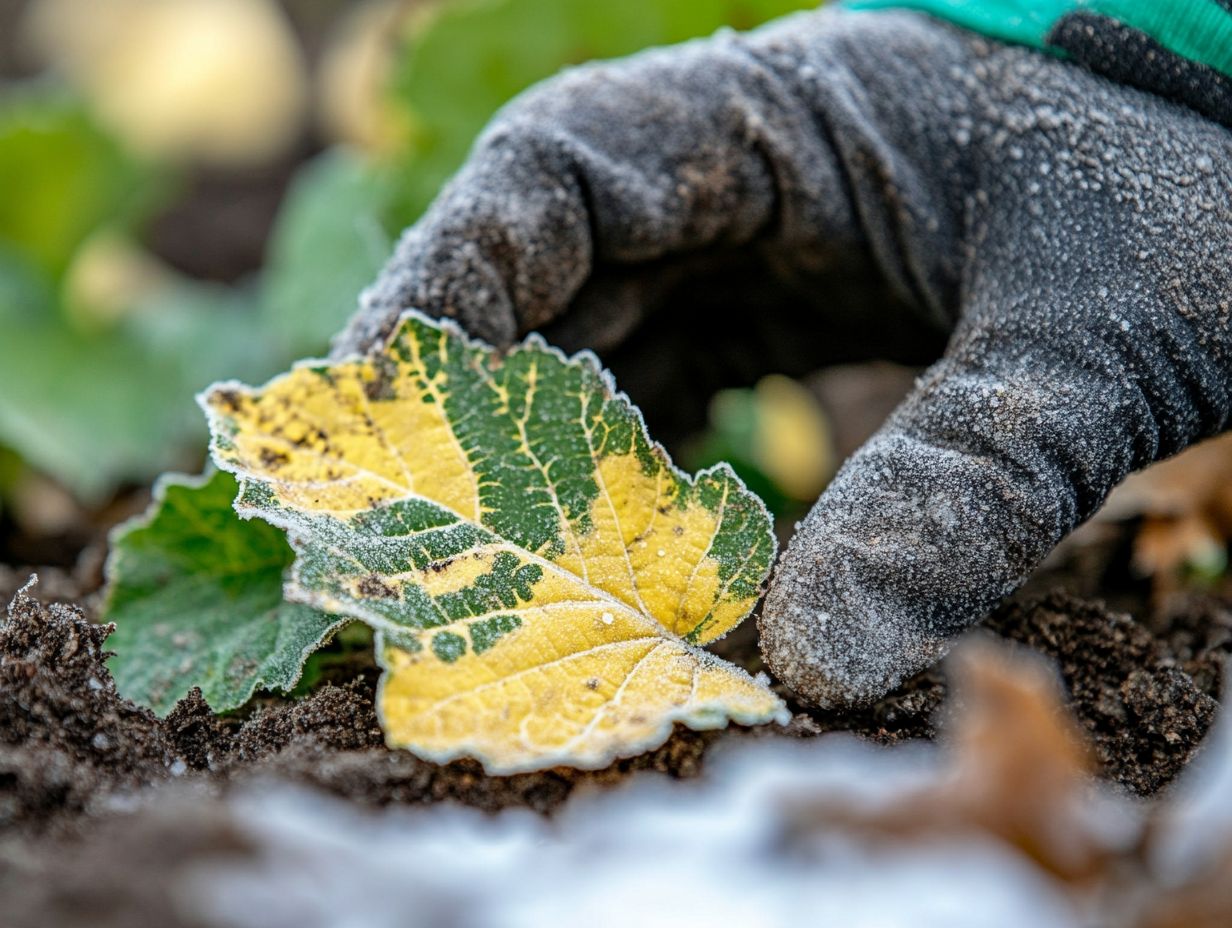
Tackle cold-weather diseases with a smart, all-in-one approach! Effectively addressing these issues demands a comprehensive strategy that integrates multiple treatment options, carefully tailored to the specific pathogens impacting your perennial plants.
Employing fungicides like chlorothalonil can offer immediate relief for affected plants. Systemic treatments, including Actigard and other effective pest control strategies, enhance their defenses against future infections.
Grasping these treatment options is crucial for effective disease management and the sustained health of your plants.
Start today! Your plants will thank you when they flourish in the warmer months ahead.
Effective Treatment Options
Tackle cold-weather diseases head-on for a thriving garden! Effective treatment options are key for keeping your plants healthy and vibrant. Consider applying fungicides to fight specific pathogens, such as Erysiphe and Fusarium. Use systemic treatments to boost your plants’ immunity.
Among the various fungicides, those with active ingredients like azoxystrobin or propiconazole stand out as particularly effective against frost-related fungal infections. It s generally advisable to apply these treatments during the fall and early spring, just before the cold weather sets in, to maximize their protective benefits.
Incorporating systemic treatments, especially those that include biologically-based compounds, and monitoring for signs of root diseases can significantly bolster plant health from within.
By monitoring environmental conditions and recognizing the specific vulnerabilities of each plant species, you can tailor your applications effectively. This proactive approach reduces disease spread and promotes thriving ecosystems in your garden.
Identifying and Addressing Underlying Issues
Identifying and addressing the underlying issues is paramount in the effective management of cold-weather diseases and landscape diseases. These often arise from deeper systemic problems rather than mere isolated symptoms.
Proper disease identification enables you to recognize plant care routines that may require adjustment, such as watering schedules and soil management. By tackling these underlying issues head-on, you can significantly enhance your disease management efforts and cultivate healthier plants.
Addressing Root Causes of Disease and Key Diseases
Addressing the root causes of disease is crucial for effective management and the long-term health of your perennial plants. Plant care routines, like maintaining adequate moisture levels and encouraging genetic resistance, play a vital role in reducing the factors that lead to disease development. By concentrating on these root causes, you can create healthier growing conditions and prevent future outbreaks.
Cold weather often ushers in a myriad of challenges, including frost damage and overly saturated soils, which can set the stage for bacterial and fungal diseases, as well as infected plants. Adjusting your watering schedules or implementing proper drainage systems can help manage excess moisture a key player in plant vulnerability. Opting for perennial varieties that boast inherent genetic resistance equips your garden with stronger defenses against pathogens that thrive in cooler climates, making them suitable for USDA Zone 6.
Educating yourself about local climate patterns allows you to tailor your strategies effectively, ensuring that both soil moisture levels and plant selections are well-suited to your specific environmental conditions. By actively engaging with these factors, you can significantly enhance the resilience and vitality of your perennial garden while also considering winter protection strategies.
Frequently Asked Questions

What are some common cold-weather diseases in plants?
Some common cold-weather diseases in plants include frost damage, winter burn, and powdery mildew, along with host-specific diseases that can affect perennial varieties. To effectively manage these issues, consider identifying common cold-weather garden pests.
How do I know if my plants have frost damage?
Frost damage is characterized by brown or black leaves, wilted or drooping foliage, and distorted growth. It can also cause black spots or discoloration on the stems and fruit.
What is winter burn and how can I identify it?
Winter burn occurs when plants are exposed to harsh winter conditions, such as low temperatures, dry winds, and frozen soil. Symptoms include brown or yellowed leaves, scorched or dried-out foliage, and stunted growth.
Ready to protect your plants? Start applying these tips today!
Can cold weather cause powdery mildew in plants?
Yes, cold and damp conditions can lead to powdery mildew, a common leaf disease. This fungal illness shows up as a white, powdery coating on leaves, stems, and flowers. Effective pest control is crucial!
What steps can I take to prevent cold-weather diseases in my plants?
Choose hardy plant varieties that thrive in your climate. Make sure to protect your plants in winter and avoid excessive watering or fertilizing during colder months.
Proper spacing helps air flow around your plants, reducing disease risk.
What should I do if I suspect my plants have a cold-weather disease?
If you see signs of disease, such as those from Phytophthora or Cucumber mosaic virus, take action right away! Remove any infected parts and improve air flow around your plants.
Consider using organic or chemical treatments like chlorothalonil or Actigard to help control the issue.

